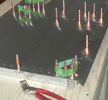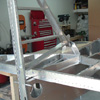


random user submitted photo
Fuel level sender
17 posts
• Page 1 of 2 • 1, 2
Fuel level sender
I’m planning on installing a Dynon HDX. What fuel level sender will work with this?
Waiex B
Slow build
Standard gear
Jabiru 3300
N333YX reserved
Slow build
Standard gear
Jabiru 3300
N333YX reserved
- crwallace1
- Posts: 4
- Joined: Wed Jan 12, 2022 12:00 am
Re: Fuel level sender
I think Sonex is selling the RED sender (formerly Princeton) that will work with any engine monitor. Or you can buy one from RED or AS&S.
- karmarepair
- Posts: 193
- Joined: Sun Oct 11, 2020 8:13 pm
Re: Fuel level sender
I can verify that the RED, formerly Princeton Probe, will work with the Dynon HDX. That is what I had installed in my B Waiex.
Lou Pappas
Phoenix, AZ
RV-7A Flying (2024)
Waiex B Turbo (2016)
RV-8 (2009)
Waiex Legacy 3300 (2007)
Hiperlight SNS-9 (1991)
Falcon Ultralight (1989)
Phoenix, AZ
RV-7A Flying (2024)
Waiex B Turbo (2016)
RV-8 (2009)
Waiex Legacy 3300 (2007)
Hiperlight SNS-9 (1991)
Falcon Ultralight (1989)
- pappas
- Posts: 352
- Joined: Wed Feb 15, 2017 11:27 am
Re: Fuel level sender
CR Wallace
I have the fuel sender unit from Lou Pappas’ Waiex. I’m building an A, this is the unit for a B.
Contact me PM if you want it for the shipping.
Gordon
I have the fuel sender unit from Lou Pappas’ Waiex. I’m building an A, this is the unit for a B.
Contact me PM if you want it for the shipping.
Gordon
Waiex 158 New York. N88YX registered.
3.0 Liter Corvair built, run, and installed.
Garmin panel, Shorai LiFePo batteries.
3.0 Liter Corvair built, run, and installed.
Garmin panel, Shorai LiFePo batteries.
- GordonTurner
- Posts: 668
- Joined: Tue Feb 21, 2012 1:14 am
- Location: NY, NY
Re: Fuel level sender
Awesome you guys could get together!
Lou Pappas
Phoenix, AZ
RV-7A Flying (2024)
Waiex B Turbo (2016)
RV-8 (2009)
Waiex Legacy 3300 (2007)
Hiperlight SNS-9 (1991)
Falcon Ultralight (1989)
Phoenix, AZ
RV-7A Flying (2024)
Waiex B Turbo (2016)
RV-8 (2009)
Waiex Legacy 3300 (2007)
Hiperlight SNS-9 (1991)
Falcon Ultralight (1989)
- pappas
- Posts: 352
- Joined: Wed Feb 15, 2017 11:27 am
Re: Fuel level sender
pappas wrote:I can verify that the RED, formerly Princeton Probe, will work with the Dynon HDX. That is what I had installed in my B Waiex.
Hi Pappas,
I have a Sonex Legacy (metal fuel tank) / Dynon Skyview - I am contemplating fitting the RED (Princeton) Fuel Probe - please tell me of your experience/opinion.
I have heard it is super sensitive to any water collecting around the probe base/lowest point in fuel tank - have you had any issues?
Also;[list=]
I tend to only use ethanol free ULP BUT one never knows for sure that some cross contamination may have occurred - your comments?
Flying in Australia, may mean that on an away trip, I may occasionally have to efuel with AvGas - your comments?[/list]
- Skippydiesel
- Posts: 799
- Joined: Tue Jul 06, 2021 6:24 am
Re: Fuel level sender
The dielectric constant shouldn't vary much between ULP and Avgas. I found the probes and probe wires a little less than robust, but once it's installed, they seem to be bombproof. Ethanol will raise hell with the calibration. If one has to run ethanol containing MoGas, I think it's use a fuel flow meter and a totalizer. The service experience of the Belite Radiant hydrostatic pressure gauges doesn't look very good. And unless your panel is designed to use a sight glass, that option is right out.
- karmarepair
- Posts: 193
- Joined: Sun Oct 11, 2020 8:13 pm
Re: Fuel level sender
I only use AVGas in my aircraft and live in the Phoenix, AZ area. Very dry here. Since moving here I have never had issues with water in my fuel. The instructions from RED/Princeton recommend that you do not use water to calibrate the probe as it will give you different readings than fuel. So, just calibrate it with fuel. If it gets wet from water, just make sure it is completely dry prior to calibrating with fuel.
Remember that water is heavier than fuel and will seek the lowest point in your fuel system. If you have a gascolator water will settle there and you will drain it prior to flight. I did not use a gascolator in either of my Sonex's and had no issues with the Aeroinjector passing any water that may have been there, ( I never noticed any).
The probe needed to be cut and shortened a bit in order to fit in the B model tank according to the plans. I don't remember if it needed to be cut for the Legacy model. Cutting and calibrating was no problem, I simply followed the written instructions and all went as expected. I also used the same model probe in my first Waiex, a legacy model, with no problems whatsoever. I would use it again without concern.
Coincidentally, the RV7-A I am building has the Van's capacitive plates in the tanks and the sending unit that we use for those is also the Princeton/RED modules. I like having the capacitive measuring devices but still rely mostly on a calibrated fuel flow sender for the most accurate indication of remaining fuel and flight times.
Remember that water is heavier than fuel and will seek the lowest point in your fuel system. If you have a gascolator water will settle there and you will drain it prior to flight. I did not use a gascolator in either of my Sonex's and had no issues with the Aeroinjector passing any water that may have been there, ( I never noticed any).
The probe needed to be cut and shortened a bit in order to fit in the B model tank according to the plans. I don't remember if it needed to be cut for the Legacy model. Cutting and calibrating was no problem, I simply followed the written instructions and all went as expected. I also used the same model probe in my first Waiex, a legacy model, with no problems whatsoever. I would use it again without concern.
Coincidentally, the RV7-A I am building has the Van's capacitive plates in the tanks and the sending unit that we use for those is also the Princeton/RED modules. I like having the capacitive measuring devices but still rely mostly on a calibrated fuel flow sender for the most accurate indication of remaining fuel and flight times.
Lou Pappas
Phoenix, AZ
RV-7A Flying (2024)
Waiex B Turbo (2016)
RV-8 (2009)
Waiex Legacy 3300 (2007)
Hiperlight SNS-9 (1991)
Falcon Ultralight (1989)
Phoenix, AZ
RV-7A Flying (2024)
Waiex B Turbo (2016)
RV-8 (2009)
Waiex Legacy 3300 (2007)
Hiperlight SNS-9 (1991)
Falcon Ultralight (1989)
- pappas
- Posts: 352
- Joined: Wed Feb 15, 2017 11:27 am
Re: Fuel level sender
Pappas, Thank you for your very full response.
My Sonex Legacy is a tad diffrent to most, having 30L wing tanks, feeding a centre (position of standard tank) 40L "header" tank. It's a header, only because it does not have an external fueling point, being supplied from the wings.
My header fuel gauge (Dynon) & sender (RED?) must be reasonably accurate, so that my finflight fuel transfer management will minimise the chance of overfilling & venting fuel overboard.
Last question: Do you find the RED/Princeton to give good consistent fuel readings?
My Sonex Legacy is a tad diffrent to most, having 30L wing tanks, feeding a centre (position of standard tank) 40L "header" tank. It's a header, only because it does not have an external fueling point, being supplied from the wings.
My header fuel gauge (Dynon) & sender (RED?) must be reasonably accurate, so that my finflight fuel transfer management will minimise the chance of overfilling & venting fuel overboard.
Last question: Do you find the RED/Princeton to give good consistent fuel readings?
- Skippydiesel
- Posts: 799
- Joined: Tue Jul 06, 2021 6:24 am
Re: Fuel level sender
I have an MGL efis with sonex supplied probe. I calibrated with 100ll. Using 90 or 91 non ethanol, my fuel gauge reads about 2 gallons low.
Bill Volcko XNS0068
Xenos A N68WV 99% flush rivets
Aerovee and Prince P-Tip
MGL Discovery Lite w/ Sandia STX 165R
V6
First hole 4/1/16
First flight 8/24/18
Phase I complete...finally!!!
Also flying a Challenger II since 1999
Xenos A N68WV 99% flush rivets
Aerovee and Prince P-Tip
MGL Discovery Lite w/ Sandia STX 165R
V6
First hole 4/1/16
First flight 8/24/18
Phase I complete...finally!!!
Also flying a Challenger II since 1999
-

bvolcko38 - Posts: 284
- Joined: Fri Feb 19, 2016 7:40 am
- Location: Finger Lakes
17 posts
• Page 1 of 2 • 1, 2
Who is online
Users browsing this forum: No registered users and 2 guests







